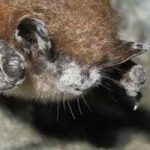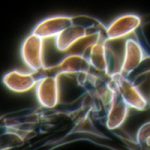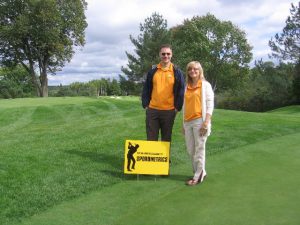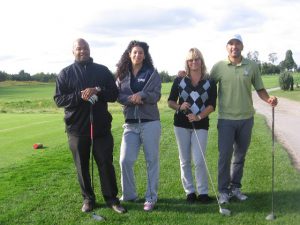EACO Golf Tourament
Published: September 16th, 2010
Revised: November 5th, 2014
On Wednesday September 15, 2010 Sporometrics had the pleasure to participate in the Environmental Abatement Council of Ontario’s (EACO) annual golf tournament held at the challenging and memorable Wooden Sticks golf course in Uxbridge, Ontario.
Sporometrics, as corporate sponsor of the putting contest, was charged with the duty of running the contest at the practice putting green for the day. James Scott and Kristine White were able to meet each player as they attempted their best putt. It was a great opportunity for us to get to know the people in the indoor environmental industry better, not to mention a deceptively challenging hole!
To celebrate our recent accreditation, Sporometrics hosted a hospitality suite at one of the Cabins at Wooden Sticks. Thank you to everyone who stopped by after dinner to celebrate with us and enjoy good company along with some good scotch.
Click here for more info >
Fungi, bacteria & Legionella!
Published: August 31st, 2010
Revised: March 29th, 2017
Sporometrics recently expanded our prestigious American Industrial Hygiene Association Laboratory Accreditation Program (AIHA-LAP, LLC) accreditation to include all fields of testing (FOTs): FUNGI, BACTERIA and LEGIONELLA. This is in addition to our recent Legionella certification of proficiency from the US CDC.
This accreditation represents the single most comprehensive and widely recognized international credential in the performance of environmental microbiological laboratory analyses of a range of matrices from the built environment.
Our dedication to the ongoing and rigorous quality assurance practices mandated by this accreditation represents our continued commitment to you and your clients. We thank you for your business and value your suggestions as we continue to improve the quality of our services.
Click to view our accreditation certificate>
AIHA Accreditation ISO:IEC 17025 awarded to Sporometrics
Published: August 19th, 2010
Revised: November 5th, 2014
We are delighted to announce that Sporometrics has recently become
fully accredited to the ISO/IEC 17025:2005 standard by the
American Industrial Hygiene Laboratory Accreditation Program (AIHA-LAP, LLC).
Accreditation represents the single most comprehensive and
widely recognized international credential in the performance of
environmental microbiological laboratory analyses of a range of
matrices from the built environment.
Our dedication to the ongoing and rigorous quality assurance practices
mandated by this accreditation represents our continued commitment to
you and your clients. We thank you for your business and value your
suggestions as we continue to improve the quality of our services.
Women of EACO
Published: July 24th, 2010
Revised: December 29th, 2010
On Wednesday November 17, 2010 the Environmental Abatement Council of Ontario (EACO) hosted its first Women of EACO Pub Night at Marlowe’s in Richmond Hill. Kristine White of Sporometrics approached the EACO board of directors with the idea of hosting this inaugural event to recognize and support the involvement of women who work in the environmental industry. The EACO Board supported the idea, and the result was more than 30 women getting together for a fun night of networking, reconnecting with old colleagues and meeting new people in the industry.
The atmosphere of the night was friendly and relaxed, and the general consensus among the women present was “why didn’t do this before?” Involvement in the industry we work in is important, and this event recognized the need for getting as many people involved as possible. Hopefully we can keep the momentum going and hold more events to encourage the involvement of all EACO members, including the females in the industry.
If you would like to ensure you are on the distribution list for future Women of EACO events please email Mary Thornburn of EACO at or Kristine White of Sporometrics.
White-nose syndrome of bats
Published: June 11th, 2010
Revised: March 7th, 2015
 White-nose syndrome (WNS) is a grave new disease of overwintering bats that has stricken bats throughout North America over the last few years. WNS is caused by a newly-described fungus, Pseudogymnoascus destructans, first discovered in New York state in 2006. It has so far been found in 11 states and 2 Canadian provinces. The affected bat pictured here was from a Massachusetts (photo by Dr. Jeremy Coleman, US Fish & Wildlife Service)
White-nose syndrome (WNS) is a grave new disease of overwintering bats that has stricken bats throughout North America over the last few years. WNS is caused by a newly-described fungus, Pseudogymnoascus destructans, first discovered in New York state in 2006. It has so far been found in 11 states and 2 Canadian provinces. The affected bat pictured here was from a Massachusetts (photo by Dr. Jeremy Coleman, US Fish & Wildlife Service)
Bats affected by WNS develop a whitish discoloration on their noses and wings consisting of fungal mycelium emerging from the bat’s skin resulting ultimately in mortality of the affected animal. A wide range of ecologically beneficial bat species are affected. In addition to consuming mosquitoes, many bat species are important predators of night-flying insects such as moths which may be agricultural pests.
 Pseudogymnoascus destructans is a mould that produces densely branched, curving chains of bean-shaped spores. This photo shows a microscopic mount from a 7 day old colony grown on Potato Dextrose agar prepared by our colleague Professor Kathie Hodge from Cornell University in Ithaca, New York. The fungus does not appear to present an infectious hazard to humans or other animals apart from bats. In bats, the transmission of P. destructans is believed to transmitted by contact; however, it is unknown if the fungus affects only unhealthy bats or if it can infect normal, healthy animals. Although unproven, it is possible that the fungus may “hitchhike” from cave-to-cave on clothing and footwear of inadvertent spelunkers.
Pseudogymnoascus destructans is a mould that produces densely branched, curving chains of bean-shaped spores. This photo shows a microscopic mount from a 7 day old colony grown on Potato Dextrose agar prepared by our colleague Professor Kathie Hodge from Cornell University in Ithaca, New York. The fungus does not appear to present an infectious hazard to humans or other animals apart from bats. In bats, the transmission of P. destructans is believed to transmitted by contact; however, it is unknown if the fungus affects only unhealthy bats or if it can infect normal, healthy animals. Although unproven, it is possible that the fungus may “hitchhike” from cave-to-cave on clothing and footwear of inadvertent spelunkers.
Dr. Scott is currently part of a volunteer scientific advisory panel on WNS led by scientists at the US Geological Service. Both Dr. Scott and Dr. Summerbell have published extensively on the fungal group to which P. destructans belongs. Our expertise on this agent uniquely positions us to provide authoritative consultation on this new and devastating pathogen.







